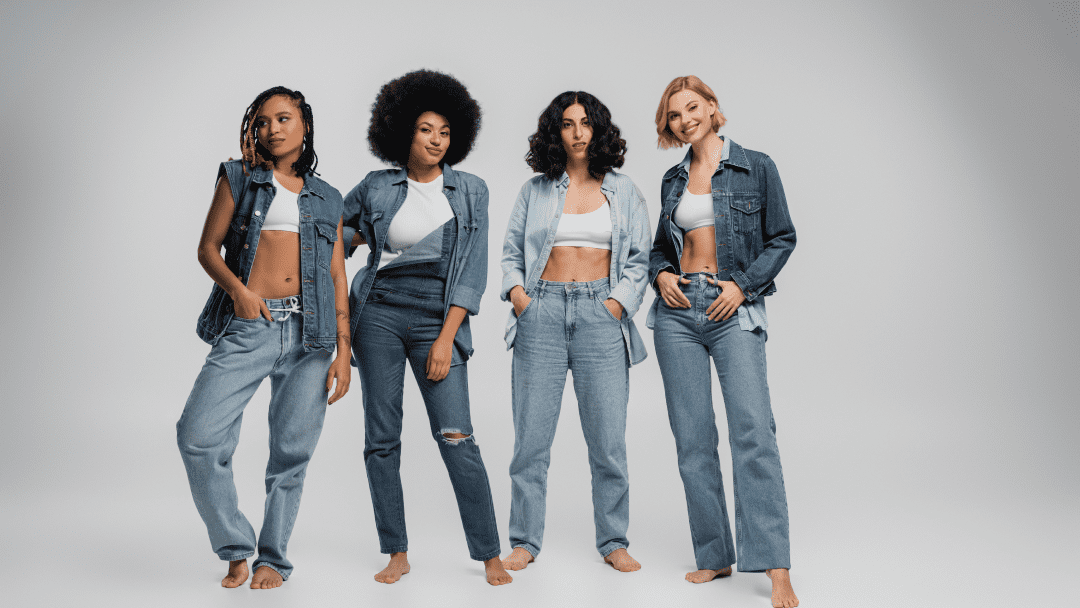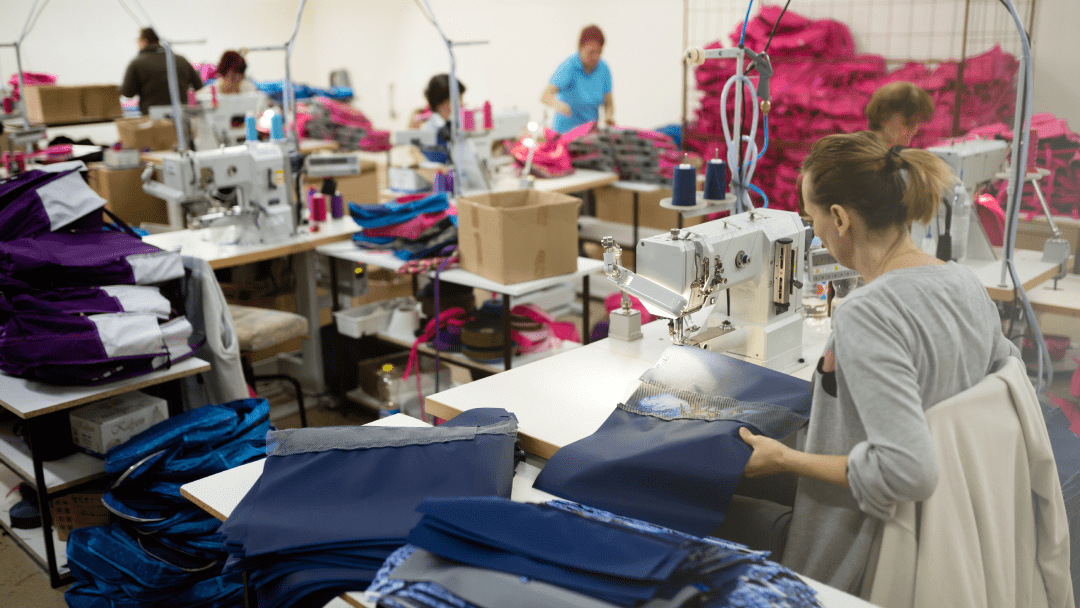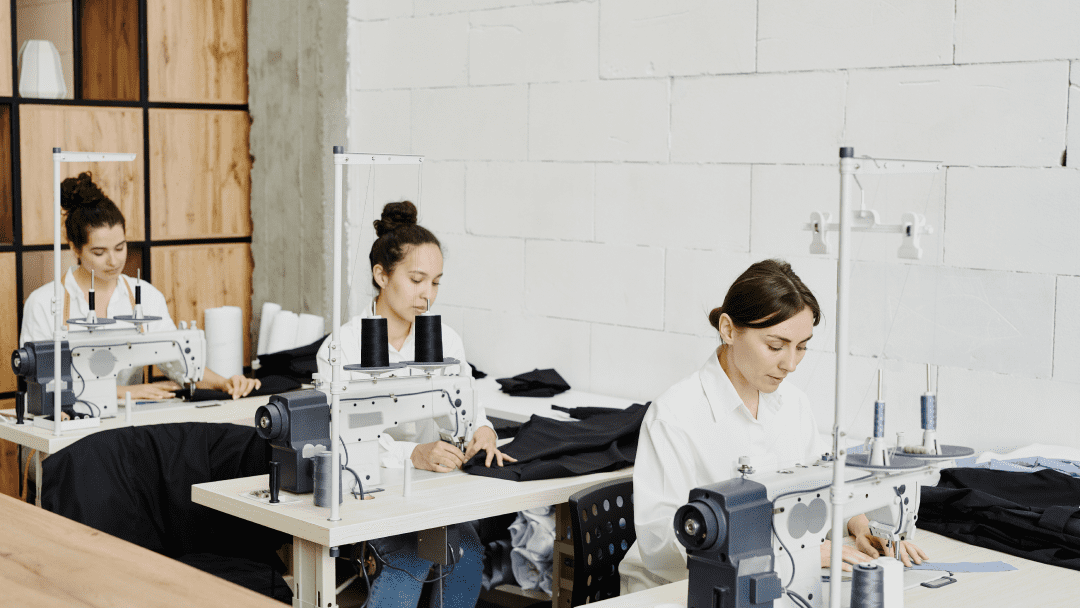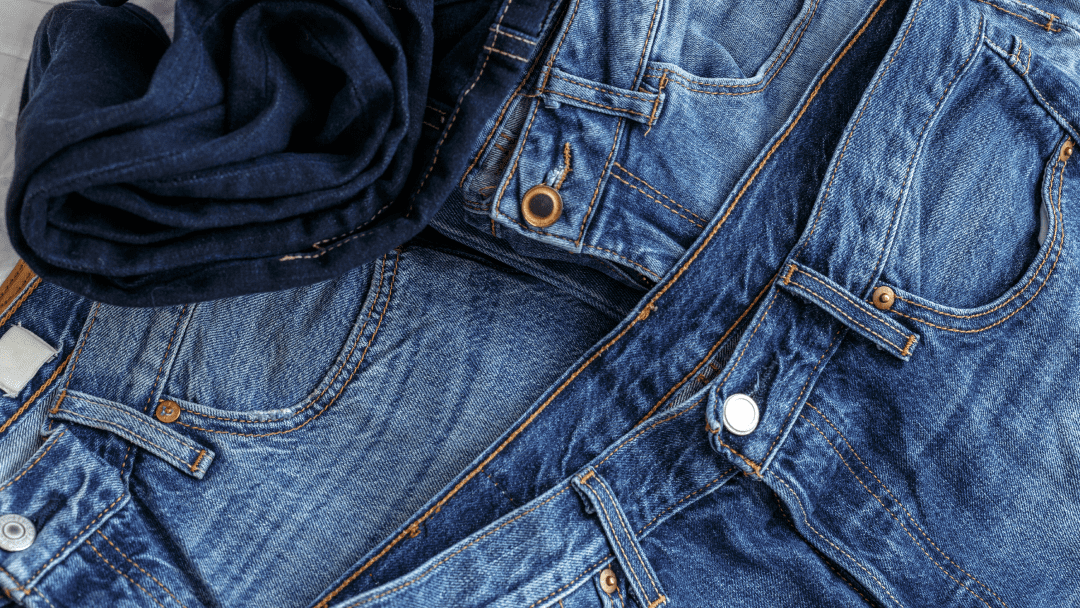Imagine a fabric renowned for its remarkable strength, capable of enduring the demands of a gold rush era. Yet, this same material has transcended its utilitarian origins to grace the wardrobes of rock stars and royalty alike. This is the paradox of denim fabric, a seemingly simple material boasting a rich history and brimming with future business potential.
This comprehensive guide delves into the world of denim, exploring its historical roots and unveiling the exciting opportunities this versatile fabric presents for both entrepreneurs and fashion enthusiasts.
What is Denim Fabric vs Jeans?

Denim, the robust cotton fabric we know from jeans and jackets, is woven in a unique way. Unlike your typical shirt, where threads run straight up and down, denim threads are woven diagonally. This creates the subtle diagonal lines you can see and feel on the surface, almost like gentle ridges.
Denim fabric also has a special weaving technique where the colored threads, often blue, are more prominent on the back of the fabric but remain hidden under the white threads on the front. This technique contributes to denim’s strength and the classic blue color we associate with it.
It’s important to differentiate between denim and jeans. Denim is the actual fabric, while jeans are a type of clothing made from denim. Jeans typically feature double stitching and rivets at the seams for added durability.
Denim’s Journey: From Humble Beginning to Fashion Icon

Denim’s story begins in the bustling markets of 17th-century France. Back then, it was known as “serge de Nîmes”, a sturdy cotton twill fabric with a hint of wool and silk woven in Nîmes. This early form of denim wasn’t meant for the runway, its strength and durability made it ideal for workwear.
Fast forward to the mid-1800s, and denim fabric set sail across the Atlantic. In the heart of the American gold rush, miners needed clothing that could withstand tough conditions. Denim, with its robust nature, became the go-to fabric for these hardworking individuals. “Waist overalls” or “dungarees,” as they were called, were crafted from denim and became the standard uniform for miners.
The early 20th century saw a shift in denim’s purpose. The rise of Hollywood brought a new wave of glamor, and cowboys and laborers clad in denim were romanticized on the silver screen. This portrayal sparked a trend, particularly among young people, who began embracing denim jeans as casual wear. The association with rebellion and nonconformity further solidified denim’s place in youth culture.
By the 1950s, denim jeans were a cornerstone of youth fashion. Icons like James Dean and Marlon Brando supported them, solidifying their cool and rebellious image. The 1960s saw the rise of the counterculture, and hippies adopted denim as a way to express their individuality and challenge societal norms.
Denim continued to evolve throughout the late 20th and early 21st centuries, with ripped, distressed, and tailored styles emerging, allowing wearers to express themselves even more creatively. Today, denim remains a ubiquitous fabric, offering a vast array of styles and washes to cater to diverse preferences.
A Guide to Different Types of Denim Fabric

Denim’s long and interesting journey has resulted in a variety of exciting options, each with its own unique characteristics and uses. Let’s delve into some of the most common types of denim fabric you’ll encounter:
- Raw Denim: This is denim in its most natural state, unwashed and untreated. It boasts a dark blue color and a stiffer feel, preferred by some for its longevity and ability to develop a unique, personalized look over time.
- Poly Denim: This type combines cotton with other materials, like polyester, for a winning mix of durability and flexibility. This makes it a versatile choice for many clothing styles.
- Linen Denim: Perfect for warmer weather, linen denim blends cotton with linen for a lightweight and breathable fabric.
- Organic Denim: This environmentally conscious option of denim uses organic cotton, hemp, or recycled materials in its production, making it a popular choice for those who prioritize sustainability.
- Sanforized Denim: Similar to raw denim, this type undergoes a special treatment to minimize shrinkage, ensuring the garment keeps its original size after washing.
- Stretch Denim: This incorporates a touch of elastane or spandex, allowing for comfortable stretch and shape retention.
- Chambray Denim: A lighter and softer option, chambray denim uses a plain weave for a more casual look. It’s often used for shirts and dresses.
How Denim Fabric is Made?

After knowing the various types of denim, you must be curious about how this denim fabric can be made into cool denim clothes. Let’s explore the fascinating process behind denim creation, which involves several key steps:
- Cotton Picking: The journey begins with cotton being harvested from fields worldwide. The fiber length impacts the final denim’s toughness. To ensure consistent quality, the cotton is blended. Imagine each cotton bale being carefully combed to remove impurities like seeds and leaves.
- Creating Strong Yarns: The clean cotton fibers are then combined and formed into thick ropes called “slivers.” These slivers are further stretched and twisted together to create even stronger, yet thinner, strands. This step ensures consistent quality in the final fabric.
- Spinning with a Twist (for Stretch Denim): Here, the strong strands are further twisted and pulled to create threads. For denim with added stretch, a special rubber-like material called elastane is woven into the thread during this process.
- Dyeing for Color: The threads are then dyed, often using the traditional indigo method for that classic blue denim look.
- Weaving the Fabric: The dyed threads are then woven together to create denim fabric. The most common weave involves three blue warp threads (vertical) for every one white weft thread (horizontal), resulting in the familiar diagonal pattern and blue color.
- Finishing Touches: After weaving, the fabric undergoes finishing processes like sanforization (to minimize shrinkage), straightening legs, and adjusting stretch. Other treatments might involve removing fuzz or enhancing smoothness and shine.
- Quality Check: Finally, the finished denim is carefully inspected for any flaws or color variations. This ensures the fabric meets the high standards required for clothing production.
Is Denim a Good Business Bet?

Denim fabric remains a superstar fabric, a timeless classic loved worldwide for its durability and endless style options. This enduring popularity makes the denim business an attractive proposition for entrepreneurs in this world. But before diving in, let’s explore some key factors:
Market on the Rise
The good news is denim fabric demand shows no signs of slowing down. Market research predicts the global denim market to grow steadily, reaching a value of USD 25.2 billion by 2026. This growth is fueled by innovative production methods and denim’s constant presence in fashion trends. Eco-friendly denim is also gaining traction, attracting environmentally-conscious consumers.
Costs and Profits
Setting up a denim business can be expensive due to raw materials and production technology. Cotton prices can be unpredictable and significantly impact costs. Studies show raw materials can make up to 60% of production costs too. However, denim fabric products often command premium prices, leading to good profit margins. Brands that successfully market their denim as high-quality or unique, like custom or handmade options can have even higher profits.
Standing Out from the Crowd
The denim industry is a crowded space with established brands dominating the market. To succeed, new players need a clear differentiator, exceptional quality, innovative designs, or a strong commitment to sustainability. The challenge lies in setting yourself apart in a saturated market, but this also presents an exciting opportunity to cater to niche markets often overlooked by bigger players.
Room for Growth
Despite initial hurdles, denim fabric offers excellent opportunities for scaling your business. The global market allows expansion beyond and denim’s versatility lets you create a wide range of styles and products. Strategic partnerships and online platforms can further boost your reach and visibility.
From Idea to Industry: Let OL Garment Guide You

Denim’s rich history and timeless appeal make it a fashion staple loved worldwide. Its versatility and durability ensure it remains a favorite for many. Inspired to create your own denim fabric fashion line? OL Garment is your partner in transforming your concept into reality.
Our expertise covers everything from selecting the perfect fabrics to ensuring top-quality production, so your denim creations are always exceptional. Thinking about starting a denim business? Visit our website to learn how we can elevate your brand and propel you to success in the denim industry. Don’t hesitate to contact our team of experts today, we’re here to help you turn your denim dreams into reality!
[FAQ]
1. What is denim fabric made from?
Denim fabric is primarily made from cotton fibers. It is woven in a twill weave, which gives it the characteristic diagonal ribbing. Some modern denim fabrics may also include a small percentage of elastane for added stretch.
2. How should I care for denim fabric?
To care for denim fabric, it is best to wash it in cold water to prevent fading and shrinkage. Turn the garment inside out to protect the surface. Avoid using bleach and tumble drying on high heat. Hang drying is often recommended to maintain the shape and quality of the denim.
3. What are the different types of denim fabric?
There are several types of denim fabric, including raw (or dry) denim, which is untreated and unwashed; selvedge denim, known for its tightly woven edges; stretch denim, which includes elastane for flexibility; and acid-washed or distressed denim, which has undergone specific treatments to create a worn look.
4. Why is selvedge denim considered special?
Selvedge denim is considered special because it is made on traditional shuttle looms that produce a tightly woven edge, or “self-edge,” preventing fraying. This type of denim is often associated with higher quality, durability, and a unique, vintage aesthetic.
5. How is the color of denim fabric achieved?
The color of denim fabric is typically achieved using indigo dye. The yarns used for the warp (the vertical threads) are dyed with indigo, while the weft (the horizontal threads) remain white. This dyeing process gives denim its distinctive blue color and the ability to develop a unique fade pattern over time with wear.
